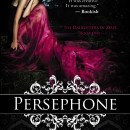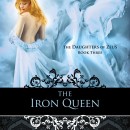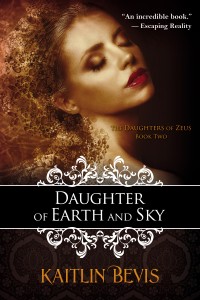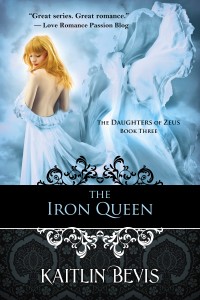 Persephone Tells All—Fear, Power, and Life With Hades
Persephone Tells All—Fear, Power, and Life With Hades
by Kaitlin Bevis
If you want to know a culture’s fears, study their stories. Fears resonate. They keep us talking, keep us telling the story, because as long as it’s a story, it’s happening to someone else. There’s a reason the Persephone myth is one of the five major myths taught to school children everywhere. There’s a reason echoes of this myth keep popping up in modern culture, sometimes as overtly as my retellings, and other times as subtle as Beauty and the Beast. We tell the same story over and over and over again because it scares us. Something about that myth leaves people feeling unsettled. There’s a wrongness to it that demands to be fixed. So throughout time, we’ve told it again and again, hoping that maybe this time, we’d get it right.
What is it about the Persephone myth that resonates so much with us? On its surface, the answer is simple. Persephone is, at its heart, the story of a mother searching for her daughter. As a mother, I can literally not even imagine the depths of the fear of not knowing where my daughter is, or worse, knowing exactly what horrible place she’s been taken to, but not being able to save her. There is nothing I wouldn’t do to keep her save, and goddess help anyone who gets in my way.
But there’s more than that. There has to be, because as a mom, I get the universal fear behind the myth, but I was fascinated with it long before I became a mother. The most common audience for the Persephone myth aren’t parents, but children. Specifically children on the cusp of adulthood. Teenagers. And I know why.
The myth is incomplete. In the original telling, we know all about Demeter’s fears and motives. We trace her steps through history as she scours the globe looking for her daughter. We glimpse the politics of Olympus enough to understand Zeus’ motives for allowing Hades to take Persephone and the drastic events that had to take place before he relented and returned the missing girl. We’re there for Hades catching a glimpse of Persephone for the first time, and we get his rationale and his motives for why he took her. We even get motives from nymphs and primordial deities with such minor roles that they get written out of most versions of the myth. Literally the only voice missing from the Persephone myth is Persephone’s.
Persephone was silenced, but the impact of her abduction is apparent. Her mythology begins with her as an innocent, carefree, happy girl picking flowers and ends with her role as the Iron Queen, a major force to be reckoned with mythologically speaking. Her name even changes. She has the ultimate coming of age story and she doesn’t even get to tell it.
We’re not just afraid of losing our children, we’re afraid of losing ourselves and our voices. And that fear repeats itself over and over and over again in Greek mythology. Ovid wrote an entire book about transformation in Greek mythology. Cassandra gained an awesome power, only to lose her voice and go insane. We pay the ferryman two coins to take us across the river because the potential of being thrown in Tartarus is less frightening than the thought of being stuck on the wrong side of the river, alone and ignored. Orpheus was featured just as prominently in Greek mythology as Hercules and literally the only superpower he had was the ability to make people listen.
I wanted to tell Persephone’s story. I wanted to get into her head and understand her transformation into the Iron Queen. I changed details here and there and I modernized the story, but I did my best to stay true to the spirit of the myth. One of the ways I did that was through the book titles. In the myth, Persephone was defined by her titles.
Book one, Persephone, is about her transformation from an ordinary girl named Kora, to Persephone, the Queen of the Underworld. It’s the story of her abduction. Her time in the Underworld changes her, but her story doesn’t end there.
I called the second one Daughter of the Earth and Sky because in the myth, Persephone’s value was placed in her role to other people. She was Demeter’s daughter, Zeus’ daughter and pawn, and Hades’ wife. The second book in the trilogy is all about Persephone trying, and failing, to balance all of her roles and the expectations that come with them without losing herself in the process. She starts the book clinging to the remnants of her old life and trying to make them fit into what she thinks her new life should be. She’s so afraid of who she might be becoming that she loses sight of who she is.
In the myths, it wasn’t until she came into her own as The Iron Queen that Persephone was referred to as a person in her own right instead of an object. Book three Persephone is a force to be reckoned with. Writing that, reaching that point with her character, was an incredible awarding experience that settled the sense of wrongness hearing the myth had left me with. I can only hope reading it does the same thing.
Pick up the first two books of The Daughters of Zeus series today!
And make sure you grab THE IRON QUEEN
available for pre order!








